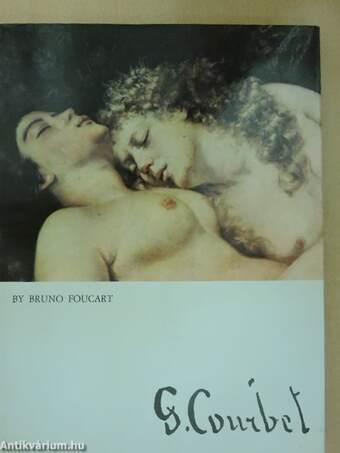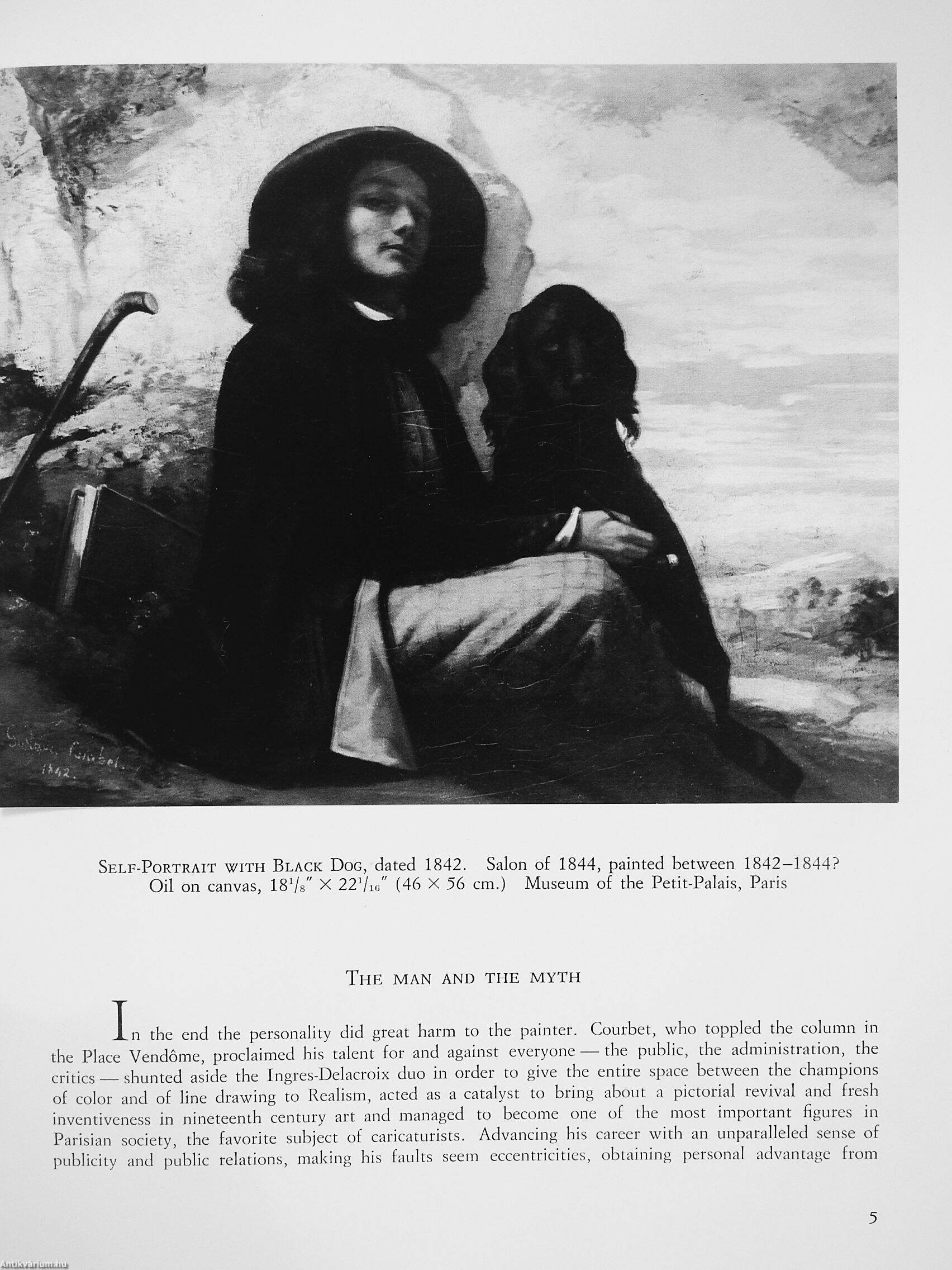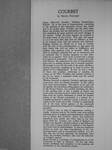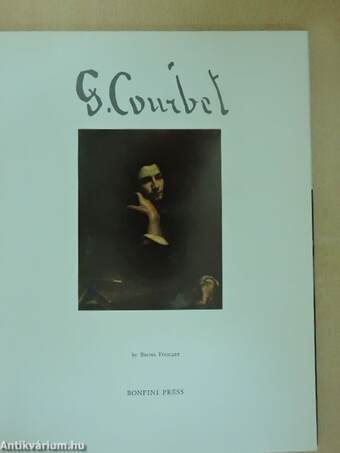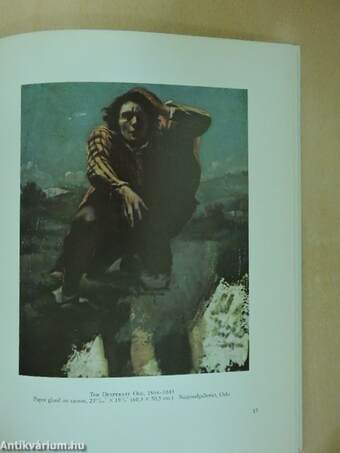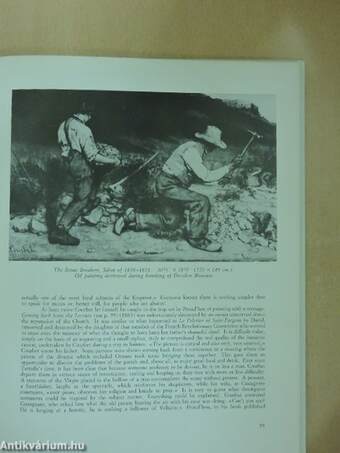1.117.559
kiadvánnyal nyújtjuk Magyarország legnagyobb antikvár könyv-kínálatát
G. Courbet
| Kiadó: | Bonfini Press |
|---|---|
| Kiadás helye: | Switzerland |
| Kiadás éve: | |
| Kötés típusa: | Ragasztott kemény kötés |
| Oldalszám: | 96 oldal |
| Sorozatcím: | |
| Kötetszám: | |
| Nyelv: | Angol |
| Méret: | 28 cm x 21 cm |
| ISBN: | |
| Megjegyzés: | Fekete-fehér és színes reprodukciókkal. |
naponta értesítjük a beérkező friss
kiadványokról
naponta értesítjük a beérkező friss
kiadványokról
Előszó
TovábbFülszöveg
COURBET
by Bruno Foucart
Ingres, Delacroix, Courbet. Idealism, Romanticip, Realism. Up to the time of Impressionism, everything in the painting of the nineteenth century wp simple and in its proper place. Courbet was the third major figure, the founder and the embodiment of a movement that paralleled the great political and social changes of the century. Today, the three enemies are reunited in the great rooms of the Louvre. They may well appear to us to be more alike than they are different, at least, if we compare them with the painters who followed. Perhaps, instead, we should try to look at Courbet with the eyes of his contemporaries, to find again the fresh vision that will not admit of indifference and explains why passions were so aroused. What was there in Courbet's painting that was so sensational and so powerful that it became necessary to take sides, either for or against? First of all, Courbet had a unique and distinctive personality. One can compare him only with... Tovább
Fülszöveg
COURBET
by Bruno Foucart
Ingres, Delacroix, Courbet. Idealism, Romanticip, Realism. Up to the time of Impressionism, everything in the painting of the nineteenth century wp simple and in its proper place. Courbet was the third major figure, the founder and the embodiment of a movement that paralleled the great political and social changes of the century. Today, the three enemies are reunited in the great rooms of the Louvre. They may well appear to us to be more alike than they are different, at least, if we compare them with the painters who followed. Perhaps, instead, we should try to look at Courbet with the eyes of his contemporaries, to find again the fresh vision that will not admit of indifference and explains why passions were so aroused. What was there in Courbet's painting that was so sensational and so powerful that it became necessary to take sides, either for or against? First of all, Courbet had a unique and distinctive personality. One can compare him only with Picasso. He understood the uses of sensationalism, knew how to awaken interest and to demand attention. He brought to new life the myth of the artist, rebellious, defying convention, speaking up to those in power and jealous of his independence. In fact, he was a victim of those very qualities, confessing to toppling the column of the Place Vendôme and unjustly ordered to pay for its repair, a penalized victim and the symbol of the Commune.
Whether detested or admired, Courbet's painting creates controversy, does not permit neutrality. It also suffers from some misconceptions. The painter of the ugly and the ignoble, the republican railing against the indecencies of the Second Empire, the socialist glorifying the labor of the working man, is also a painter of superb and erotic nudes, hunting scenes in which his love of animals leaps from the canvas, landscapes in which the familiar setting of the Ornans countryside is a pretext for a veritable immersion in Nature's womb, a journey to the origins of the world and of life. Courbet is undoubtedly one of the most lyrical painters of the nineteenth century, passionately enamored of everything he considers beautiful.
In Courbet's case, in spite of appearances, nothing is simple. A picture such as The Studio poses never-ending questions about its analysis and interpretation, which lead one to believe that Courbet's culture and intellectual aspirations were subtler and richer than he has been given credit for. Courbet, who scoffed at Raphael and Phidias, was himself a scholarly painter in and influenced by the work of many schools in addition to the Spanish and Dutch that he acknowledged. It does not complicate matters to point out these contradictions in his own pronouncements and in conventional wisdom; is it not thus that one can best appreciate the immensely naive vision, the essential innocence, that were the hallmarks of Courbet's genius?
Bruno Foucart is a professor of contemporary art in the University of Paris at Nanterre. He has had many articles published and specializes in the painting and architecture of the nineteenth century. Vissza
Témakörök
- Idegennyelv > Idegennyelvű könyvek > Angol > Művészetek > Festészet
- Idegennyelv > Idegennyelvű könyvek > Angol > Művészetek > Művészettörténet, általános
- Művészetek > Művészettörténet általános > Kontinensek művészete > Európa
- Művészetek > Művészettörténet általános > Idegen nyelv > Angol
- Művészetek > Festészet > Korszakok, stílusok > XIX. század > Realizmus
- Művészetek > Festészet > Idegen nyelv > Angol
- Művészetek > Festészet > Tanulmányok, összefoglalók > Külföldi
- Művészetek > Festészet > Albumok > Külföldi festők
- Művészetek > Festészet > Általános festészet > Története
Bruno Foucart
Bruno Foucart műveinek az Antikvarium.hu-n kapható vagy előjegyezhető listáját itt tekintheti meg: Bruno Foucart könyvek, művekMegvásárolható példányok
Nincs megvásárolható példány
A könyv összes megrendelhető példánya elfogyott. Ha kívánja, előjegyezheti a könyvet, és amint a könyv egy újabb példánya elérhető lesz, értesítjük.


